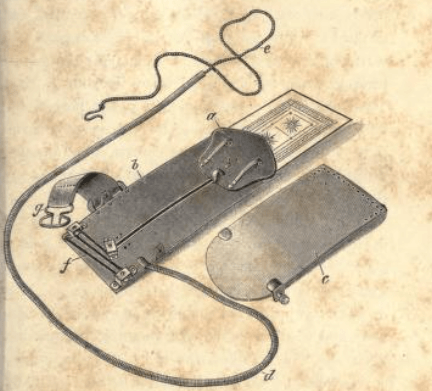Unveiling the History and Mechanics of the Card Stealing Machine
An inventive device created over 130 years ago continues to intrigue and baffle the world of gambling. Originally designed to make sleight of hand undetectable to even the most watchful eyes, this unique mechanism has helped some cheat private games and even casinos, sometimes raking in extraordinary amounts of money before being caught.
 Image: The legacy of mechanical cheating devices persists in both private and professional games.
Image: The legacy of mechanical cheating devices persists in both private and professional games.
The Curious Case of Kepplinger’s Ingenious Device
In the late 1880s, the infamous PJ Kepplinger captured attention at a North American poker table-but not for his card-playing skills. When three suspicious fellow players restrained and searched him, they discovered a sophisticated metal contraption emerging from his sleeve, clutching a card ready for secret retrieval. The device, activated by a concealed cable running from knee to knee under the table and operated via subtle leg movements, was the first known instance of this elaborate mechanical card "holdout."
Surprisingly, the outcome was not a trip to jail for Kepplinger. Instead, the same men he’d tried to cheat were so impressed by his technical prowess that they hired him to build three more machines for their own use.
 Kepplinger caught using his invention. [Image: offbeatoregon.com]
Kepplinger caught using his invention. [Image: offbeatoregon.com]
Evolution of the Holdout: Knee-Spread and Toe-Spread Mechanisms
As time progressed, Kepplinger’s creation was refined into two primary variants: the knee-spread and the toe-spread designs.
 Despite advancements, the essential design of cheating holdouts remains unchanged. [Image: liveauctioneers.com]
Despite advancements, the essential design of cheating holdouts remains unchanged. [Image: liveauctioneers.com]
The knee-spread method uses discrete openings in the inner trousers, allowing a cable to be stretched across the knees while seated. This cable then runs through a series of custom brass tubes and hinges, reaches the waist, and runs along the arm, ending at a sliding mechanism at the wrist. Tension (now kept steady with a modern elastic band) hides or reveals the 'thief' that snatches cards, depending on movements below the table.
On the other hand, the toe-spread variant anchors the cable to the foot, requiring the user to operate the mechanism by tilting their ankle. Although this style eliminates the need for a cable between the knees, it demands specific muscle strength and can cause painful cramps while learning to use it. Operators often wore boots, using the pointed toe to hook the cable-though misuse could lead to serious injury.
Learning Pains: The Dangers of Improper Use
Not all users of the toe-spread holdout are so lucky. One magician eager to incorporate the contraption into his stage act quickly found himself in trouble. Lacking practical guidance, he wound the cable around his big toe, only to nearly cut off circulation completely. After improvising a protective "helmet" for his toe, he attempted to wear the machine again-discovering the hard way that the mechanism was never meant to be operated in this way. In reality, cheaters used the boot's toe for leverage, not their own.
The Skill Set Needed to Operate a Stealing Machine
Mastering these devices is no simple feat. Effective use requires seamless sleight of hand that mirrors the genuine motions of a normal card player-handling, sorting, and peeking at cards-all while discreetly deploying the mechanism. To an untrained observer, even one watching closely, it’s impossible to detect the trickery at work.
For many, these demands are too great, and even skilled performers have abandoned the holdout in favor of techniques that are simpler to execute but equally deceptive for audiences.
Every Device is Unique: Customization and Maintenance
Only a scant number of cheaters successfully employ such devices, largely because their operation is immensely challenging and each holdout must be regularly tuned and customized. Moreover, a body of secret techniques surrounds their practical use; without these hidden skills, the chance of exposure increases dramatically.
 Proficiency with these holdouts demands ongoing practice-and guts. Would you risk it? [Image: Wikipedia]
Proficiency with these holdouts demands ongoing practice-and guts. Would you risk it? [Image: Wikipedia]
Experienced machine players often personalize their devices for better performance-sometimes combining parts from several holdouts and even incorporating design solutions from previous owners. A well-worn device operates with remarkable smoothness, while a new one may require extended "breaking in" to achieve the same ease.
Modern-Day Holdouts: Why They Still Exist
Despite technological advances in gaming and security, some professional gamblers still rely on mechanical holdouts to manipulate cards and private games. While they can enable astonishing moves without a detectable trace, the reality is that such efforts require extraordinary risk, expertise, and constant vigilance, often for modest rewards.
One skilled operator even speculated that these tools could be put to alternative uses, such as rapidly marking a deck for further exploitation-although this remains, for now, an untested possibility.
Remarkably, even as contemporary card games like Texas Hold ‘Em move away from physical deck manipulation, incidents still surface. In a notable recent case, a gambler was caught in a casino using a holdout while playing Baccarat-already having pocketed $900,000 at the time of discovery.
Conclusion: The Enduring Legacy of the Card Stealing Machine
While the classic Kepplinger and its descendants may seem like historical oddities, they prove that mechanical ingenuity can still outmaneuver even the most advanced surveillance-at least for a while. The holdout’s blend of engineering and sleight of hand continues to both fascinate and warn, a reminder that in the world of gaming, the line between genius and mischief is an ever-shifting one.













